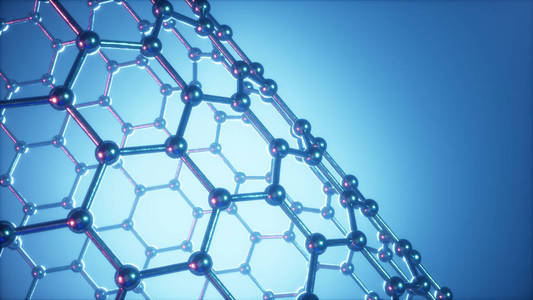Environmental monitoring is essential for assessing and addressing issues related to pollution, climate change, and resource management. Graphene, with its unique properties such as high surface area, exceptional electrical conductivity, and chemical stability, has emerged as a promising material for developing advanced sensors and detection systems. This article explores the applications of graphene in air quality monitoring, water pollution detection, and other environmental surveillance technologies.

1. Advantages of Graphene in Environmental Monitoring
Graphene’s exceptional attributes provide several advantages for environmental sensors and devices:
- High Sensitivity: Detects minute changes in the concentration of pollutants due to its high conductivity and large surface area.
- Selectivity: Functionalized graphene can target specific gases, chemicals, or biological pollutants.
- Durability: Performs reliably in harsh environmental conditions.
- Miniaturization Potential: Enables the creation of compact, portable, and energy-efficient sensors.
- Rapid Response: Offers real-time monitoring with quick detection times.
2. Applications in Air Quality Monitoring
2.1 Detection of Gaseous Pollutants
- Challenges:
- Traditional air quality sensors struggle to detect trace amounts of harmful gases like nitrogen dioxide (NO₂), carbon monoxide (CO), sulfur dioxide (SO₂), and volatile organic compounds (VOCs).
- Graphene’s Role:
- Graphene-based sensors are highly sensitive to changes in gas concentration. Functionalizing graphene with metal nanoparticles (e.g., palladium, platinum) enhances selectivity for specific gases.
- Applications:
- Indoor Air Monitoring: Detects pollutants from household products and building materials.
- Outdoor Air Quality Systems: Measures pollutants in urban and industrial environments, aiding in compliance with environmental regulations.
2.2 Particulate Matter (PM) Detection
- Graphene Nanocomposites: Advanced materials that can measure PM2.5 and PM10 levels in real-time, helping to mitigate health risks associated with air pollution.
- Wearable Sensors: Portable graphene-based devices allow individuals to monitor personal exposure to air pollution.
3. Applications in Water Pollution Detection
3.1 Heavy Metal Detection
- Current Challenges:
- Traditional methods like atomic absorption spectroscopy are expensive, time-consuming, and require laboratory settings.
- Graphene-Based Solutions:
- Functionalized graphene oxide (GO) can selectively bind to heavy metals like lead (Pb²⁺), mercury (Hg²⁺), and cadmium (Cd²⁺).
- Graphene electrodes are used in electrochemical sensors for rapid, on-site testing.
3.2 Organic Pollutant Detection
- Graphene’s Role:
- Detects organic contaminants such as pesticides, herbicides, and pharmaceuticals in water through its high adsorption capacity and ability to enhance signal sensitivity.
- Applications:
- Real-Time Water Quality Monitoring: Helps industries and municipalities ensure compliance with wastewater regulations.
- Remote Monitoring Systems: Integrated with IoT technology for continuous water quality assessment.
3.3 Biological Contamination
- Graphene in Biosensors:
- Functionalized graphene can detect microbial contamination by identifying DNA, proteins, or enzymes associated with harmful bacteria and viruses.
4. Applications in Soil and Ecosystem Monitoring
4.1 Monitoring Soil Contamination
- Graphene Electrodes: Used to identify pollutants like heavy metals and hydrocarbons in soil samples.
- Smart Agriculture: Graphene sensors monitor soil quality, including pH and nutrient levels, enabling precision farming.
4.2 Ecosystem Health Assessment
- Graphene-Based Sensors: Help monitor water quality in ecosystems such as rivers, lakes, and wetlands, ensuring the survival of aquatic life.
5. Integration with Emerging Technologies
5.1 Internet of Things (IoT)
- Graphene and IoT Sensors: Compact, energy-efficient graphene sensors are integrated into IoT networks for real-time, remote environmental monitoring.
- Applications:
- Air quality systems in smart cities.
- Water quality monitoring in agricultural or industrial regions.
5.2 Artificial Intelligence (AI)
- Role of AI: Processes data collected by graphene sensors to predict pollution trends and suggest mitigation strategies.
- Example: Graphene-enhanced AI systems can predict smog events in urban areas.
5.3 Portable and Wearable Devices
- Personalized Monitoring: Graphene-based wearable sensors allow individuals to track their exposure to pollutants in real-time.
6. Advantages Over Conventional Methods
- Cost-Effective: Reduces the need for expensive laboratory-based testing.
- Real-Time Monitoring: Enables rapid response to environmental hazards.
- Scalability: Portable graphene sensors can be deployed across diverse environments.
- Eco-Friendly: Non-toxic and sustainable materials reduce environmental impact during sensor production and use.
7. Challenges and Limitations
7.1 Production Costs
- Scaling up graphene production for widespread sensor use remains a significant challenge.
7.2 Functionalization Complexity
- Functionalizing graphene for specific pollutants requires advanced techniques and expertise.
7.3 Regulatory Approvals
- Ensuring compliance with environmental monitoring standards is critical for commercial adoption.
8. Future Directions
8.1 Advancing Graphene Production
- Innovations in graphene manufacturing, such as chemical vapor deposition (CVD) and liquid-phase exfoliation, are reducing costs and increasing availability.
8.2 Integration with Renewable Energy
- Self-powered graphene sensors that utilize solar or kinetic energy could enhance sustainability.
8.3 Expanding Applications
- Graphene-based devices could monitor additional environmental parameters, such as greenhouse gases and radiation levels.
8.4 Collaboration and Standardization
- Partnerships between graphene producers, sensor manufacturers, and environmental agencies will drive innovation and adoption.
9. Conclusion
Graphene is revolutionizing environmental monitoring by enabling highly sensitive, selective, and portable detection systems for air, water, and soil pollutants. Its integration with IoT and AI technologies further amplifies its potential, paving the way for smarter and more sustainable monitoring solutions. While challenges like production costs and regulatory hurdles remain, ongoing research and innovation are rapidly advancing graphene’s role in environmental protection. As these solutions scale globally, graphene will play an essential part in safeguarding the planet’s health and resources.

